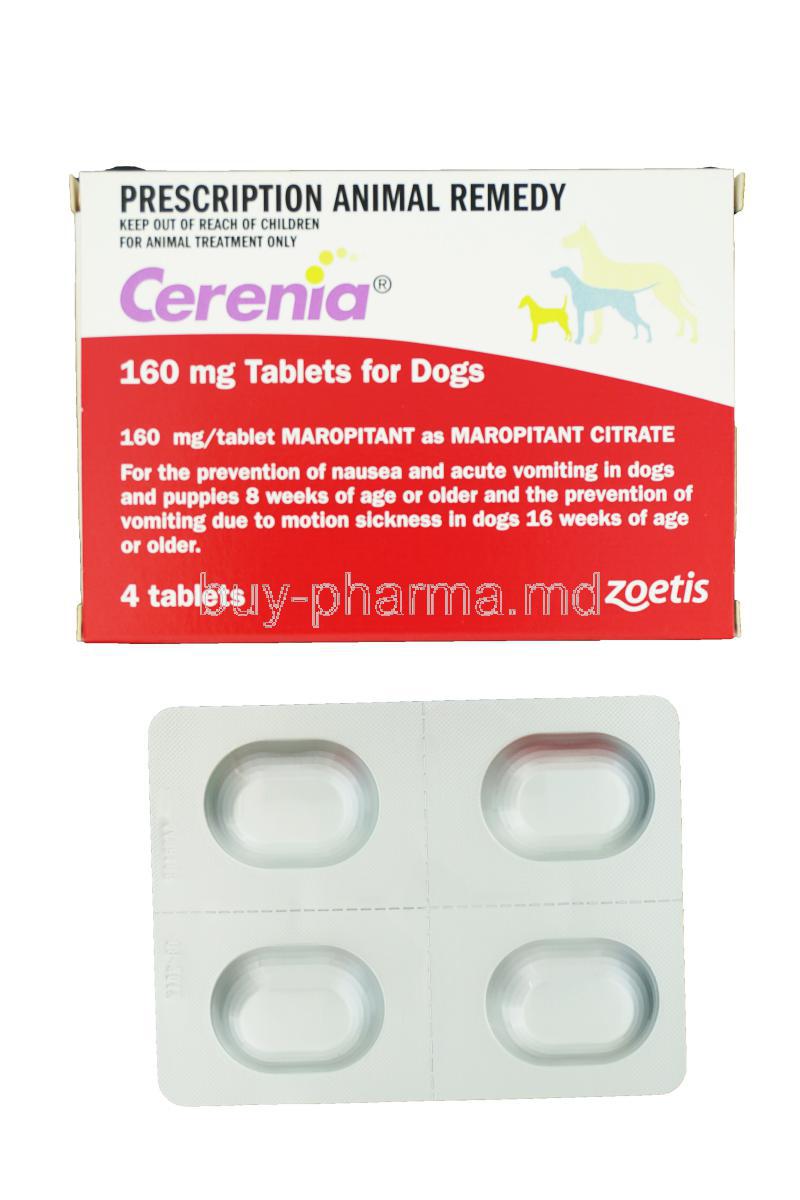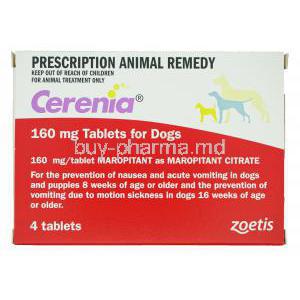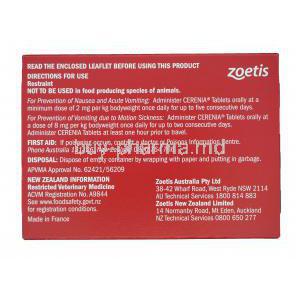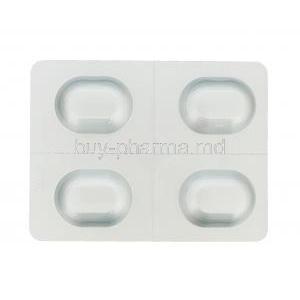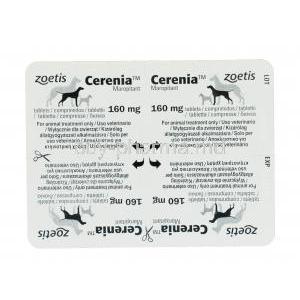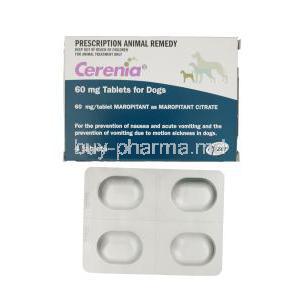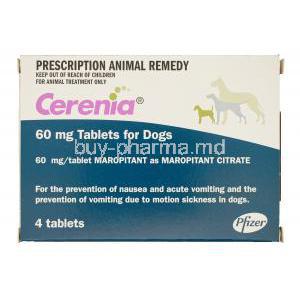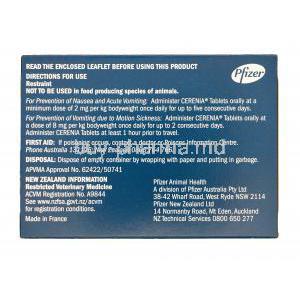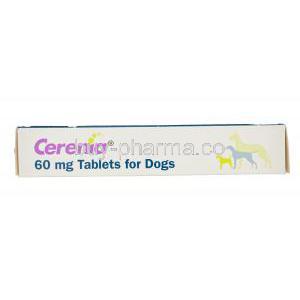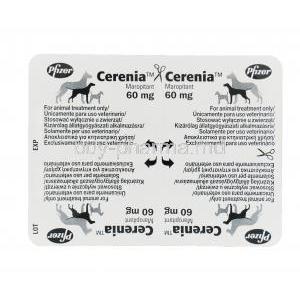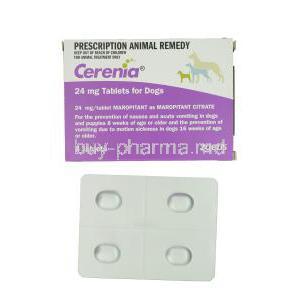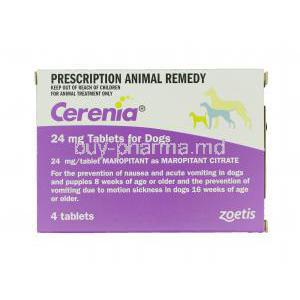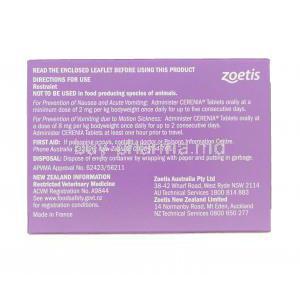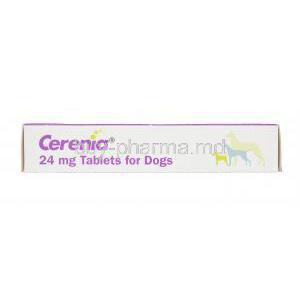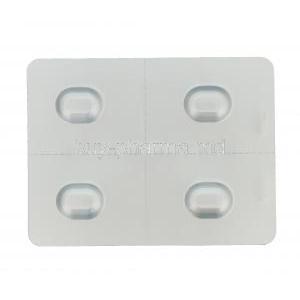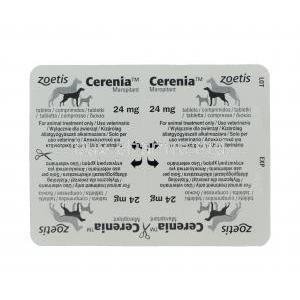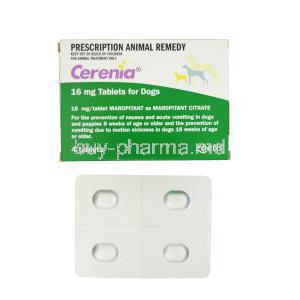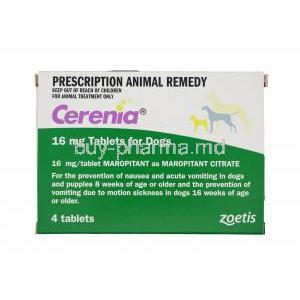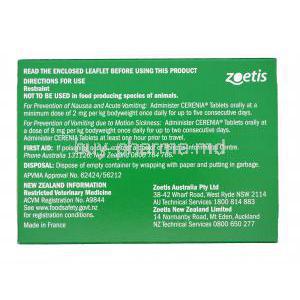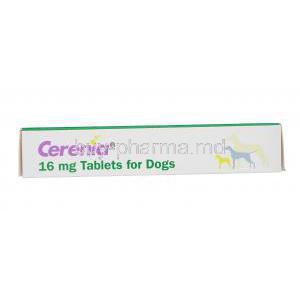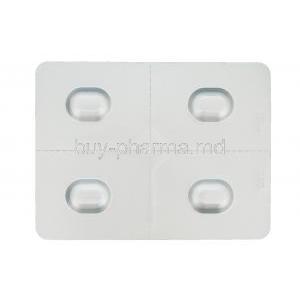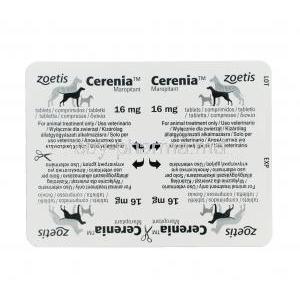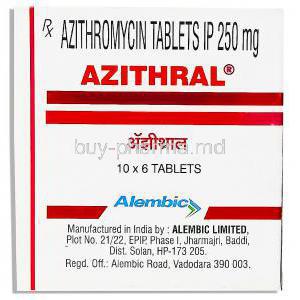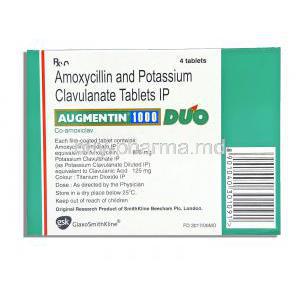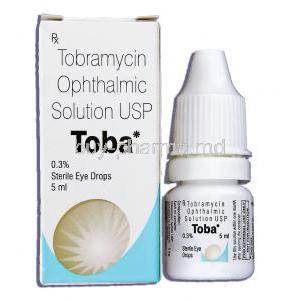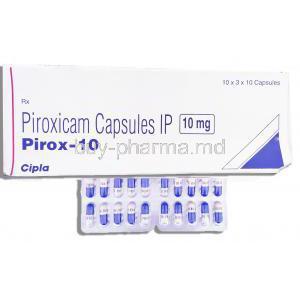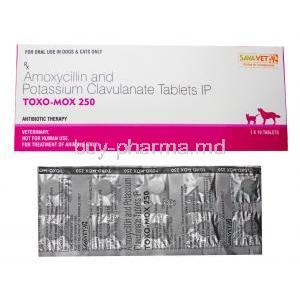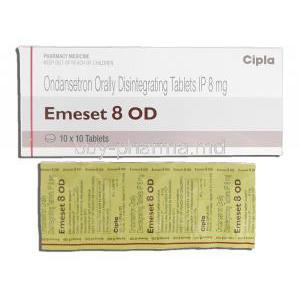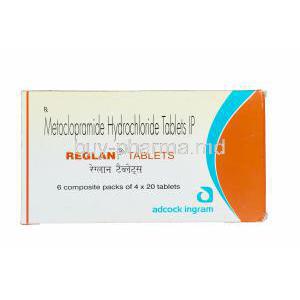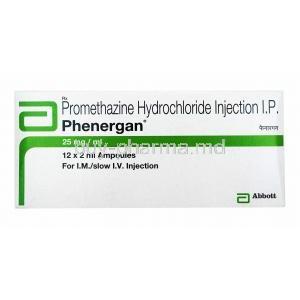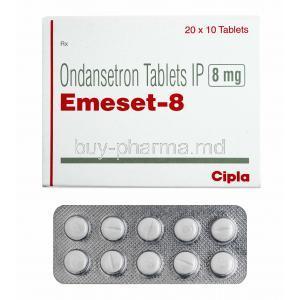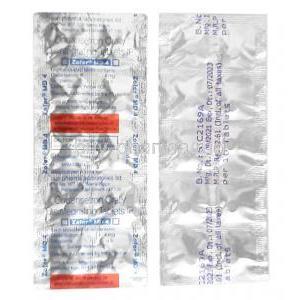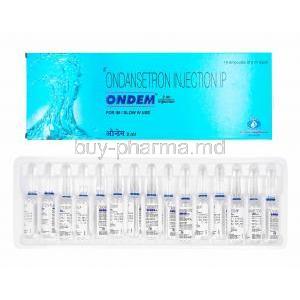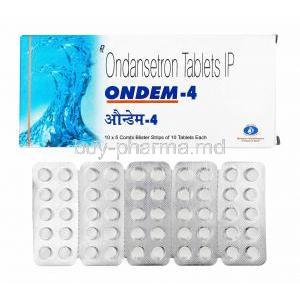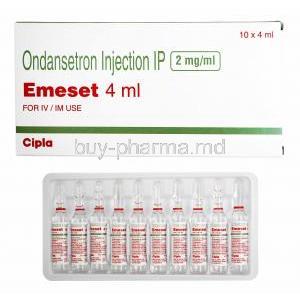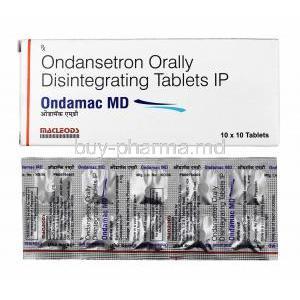1. Introduction to Cerenia for Dogs
Overview of Cerenia (Maropitant Citrate)
Cerenia, containing the active compound Maropitant Citrate, is a selective neurokinin-1 (NK1) receptor antagonist. It is designed specifically for veterinary use and targets the root cause of vomiting in canines. This antiemetic formulation is one of the first of its kind approved for dogs.
Veterinary Approval and Prescription Status
Cerenia holds FDA approval for veterinary applications and is classified as a prescription-only medication. It must be dispensed under the supervision of a licensed veterinarian. Its use signifies a paradigm shift in the management of vomiting and nausea in companion animals.
Key Benefits in Canine Medicine
- Effective in managing both acute and motion-induced emesis
- Reduces the distress associated with gastrointestinal upset
- Improves post-operative recovery by controlling nausea
- Safe for use in a wide range of canine breeds and sizes
Cerenia enhances the overall quality of life for affected dogs and supports better clinical outcomes.
Available Forms (Tablets, Injectable Solution)
Cerenia is available in two main formulations:
- Chewable tablets for oral administration in 16 mg, 24 mg, 60 mg, and 160 mg doses
- Injectable solution (10 mg/mL) for subcutaneous or intravenous use
These versatile delivery forms enable tailored treatment strategies based on clinical need.
2. Medical and Off-Label Uses of Cerenia for Dogs
2.1 FDA-Approved Uses of Cerenia
Cerenia is officially approved for the prevention and treatment of:
- Acute vomiting resulting from dietary indiscretion, infections, or systemic illnesses
- Vomiting caused by chemotherapy, toxin ingestion, or motion sickness
Its antiemetic action is both rapid and enduring, reducing clinical signs within hours.
2.2 Off-Label and Investigational Uses of Cerenia in Veterinary Practice
Veterinarians may use Cerenia off-label for a range of additional indications:
- Feline vomiting and nausea (not approved in cats but used with caution)
- Control of postoperative nausea and vomiting (PONV)
- Mitigation of nausea associated with opioid premedication
- Adjunct in pancreatitis and reflux esophagitis therapy
- Inclusion in multimodal pain management regimens due to its central effects
These uses, while not officially sanctioned, are grounded in clinical experience and emerging studies.
3. Mechanism of Action: How Maropitant Works in Dogs
Neurokinin-1 (NK1) Receptor Antagonist Activity
Maropitant acts by selectively blocking NK1 receptors in the central nervous system. These receptors bind substance P, a key neurotransmitter involved in emesis.
Blocking Substance P in the Vomiting Center of the Brain
By preventing substance P from binding at its receptor sites in the vomiting center (area postrema and nucleus tractus solitarius), Cerenia halts the cascade that triggers vomiting reflexes.
Onset of Action and Duration of Effect
Cerenia typically begins to take effect within 1–2 hours post-administration. Its antiemetic effect persists for up to 24 hours, offering extended relief.
4. Composition and Available Strengths of Cerenia
Active Ingredient: Maropitant Citrate
Each tablet or mL of injectable solution contains Maropitant Citrate, the primary active compound responsible for the drug's therapeutic effects.
Inactive Excipients in Tablet and Injectable Forms
Inert ingredients may include:
- Lactose monohydrate
- Microcrystalline cellulose
- Magnesium stearate
Injectables are stabilized in buffered aqueous solution for optimal bioavailability.
Tablet Strengths: 16mg, 24mg, 60mg, 160mg
The wide range of tablet strengths allows precise dosing by weight, minimizing the risk of underdosing or toxicity.
Injectable Concentration and Formulation
The injectable form is supplied as a 10 mg/mL solution in sterile vials, suitable for subcutaneous or intravenous administration.
5. Dosage and Administration Guidelines
5.1 Recommended Dosage by Indication
- For acute vomiting: 1 mg/kg once daily
- For motion sickness: 8 mg/kg, administered at least 2 hours before travel
5.2 Route of Administration
Cerenia may be given:
- Orally as a tablet, ideally on an empty stomach for enhanced absorption
- Via subcutaneous injection for faster action in emergency scenarios
5.3 Duration of Treatment
- Acute vomiting: typically administered for up to 5 consecutive days
- Motion sickness: daily administration up to 2 consecutive days per travel event
Prolonged use should be guided by veterinary evaluation to avoid cumulative effects.
6. Common and Serious Side Effects of Cerenia
6.1 Frequently Reported Side Effects
Most dogs tolerate Cerenia well, though minor side effects may include:
- Excessive salivation
- Loose stools or mild diarrhea
- Temporary lethargy or disinterest in activity
- Localized pain or swelling at injection site
6.2 Rare but Serious Adverse Reactions
Less commonly observed but serious reactions include:
- Anaphylactic responses (rare)
- Cardiac arrhythmias, especially in dogs with pre-existing heart conditions
- Bone marrow suppression in high or prolonged dosing scenarios
Immediate veterinary intervention is advised if such symptoms arise.
7. Drug Interactions and Contraindications
7.1 Known Drug Interactions
Maropitant may interact with:
- Nonsteroidal anti-inflammatory drugs (NSAIDs), potentially compounding gastrointestinal irritation
- Drugs metabolized via cytochrome P450 enzymes, altering systemic exposure
- Anticonvulsants like phenobarbital, which may induce hepatic enzymes affecting Cerenia metabolism
7.2 Contraindications
Cerenia should not be used in:
- Dogs with hypersensitivity to maropitant or excipients
- Puppies under 8 weeks (injectable) or 16 weeks (tablet form) due to incomplete hepatic enzyme development
Veterinary discretion is essential in high-risk or contraindicated cases.
8. Special Administration Considerations
8.1 Use in Geriatric Dogs
As dogs age, their metabolic and excretory systems undergo physiological decline, which can affect the pharmacokinetics of medications such as Cerenia. Maropitant citrate may linger longer in the system due to reduced hepatic metabolism and renal clearance in elderly canines.
- Frequent liver enzyme monitoring is advised to detect early signs of hepatic strain.
- Baseline kidney function tests, such as BUN and creatinine levels, should be evaluated before initiating therapy.
- Dose adjustments may be prudent in severely geriatric patients or those with multiple comorbidities.
Tailoring treatment in older dogs ensures safety while maintaining efficacy.
8.2 Administration to Pregnant and Lactating Dogs
Cerenia’s reproductive safety profile has been investigated in controlled settings. While studies have not demonstrated significant teratogenic effects, data remains limited for routine administration during gestation.
- Its use during pregnancy should be restricted to cases where benefits clearly outweigh risks.
- In lactating bitches, caution is advised, as it is unknown whether maropitant is excreted in canine milk.
Veterinary discretion is essential, particularly during early embryogenesis and peak lactation periods.
8.3 Use in Puppies and Juvenile Dogs
Age is a critical determinant for maropitant safety. Puppies under 8 weeks (for injectable) and under 16 weeks (for oral tablets) are particularly susceptible to adverse reactions.
- Immature hepatic enzyme systems may not adequately process maropitant, leading to potential toxicity.
- Weight-based dosing is crucial; dosing errors in smaller breeds may lead to pronounced adverse effects.
Pediatric administration should be reserved for clinically justified cases under close supervision.
9. Precautions and Careful Administration Guidelines
Monitoring During Long-Term Therapy
Though Cerenia is often prescribed for short durations, some clinical scenarios necessitate extended use. In such cases:
- Periodic liver function tests (ALT, AST) and CBC panels are recommended.
- Behavioral changes, appetite suppression, or lethargy should be documented and reported.
Handling Dogs with Hepatic Impairment
Cerenia undergoes extensive hepatic metabolism. In dogs with compromised liver function, accumulation may occur.
- Initial dosage should be conservative, with gradual titration based on clinical response.
- Liver-supportive co-therapies may be considered in chronic hepatic cases.
Use in Dogs with Underlying Cardiac or Neurologic Conditions
Though not directly cardiotoxic or neurotoxic, maropitant may exacerbate symptoms in sensitive animals.
- Monitor heart rate and rhythm if used in dogs with arrhythmias or congestive heart failure.
- Seizure-prone dogs should be observed closely, especially during dose initiation.
Preventing Accidental Overdose
Proper storage and secure packaging are imperative, especially in multi-pet households.
- Educate pet owners on correct dosing intervals and tablet strengths.
- Never double up on missed doses; instead, resume the normal schedule unless advised otherwise.
10. Overdose Symptoms and Emergency Management
Signs of Overdose: Ataxia, Tremors, Excessive Sedation
Toxic doses of Cerenia may present with alarming neurological signs:
- Gait instability or sudden loss of coordination (ataxia)
- Intermittent muscle twitching or full-body tremors
- Prolonged drowsiness or unresponsiveness
Immediate Steps to Take if Overdose Occurs
In the event of a suspected overdose:
- Contact a veterinarian or poison control center immediately.
- Do not induce vomiting unless instructed by a professional.
- Provide details such as time of ingestion, dosage, and dog’s weight.
Veterinary Treatment Protocols for Toxicity
Supportive care is the mainstay of overdose management.
- IV fluid therapy to promote renal clearance
- Activated charcoal may be administered if ingestion was recent
- Symptomatic control for seizures, arrhythmias, or hypotension as needed
11. Proper Handling and Storage of Cerenia
Recommended Storage Temperature and Conditions for Tablets and Injections
To maintain drug integrity:
- Tablets should be stored at 15–30°C (59–86°F), away from light and moisture.
- Injectable solution should be refrigerated at 2–8°C (36–46°F).
Shelf-Life After Opening Vial
Once opened:
- Injectable vials should be used within 90 days when stored correctly.
- Do not freeze the injectable formulation.
Disposal of Unused or Expired Medication
Unused Cerenia should be disposed of responsibly:
- Return to veterinary clinics or pharmacies participating in disposal programs.
- Do not flush or discard in household waste unless instructed.
Safety Tips for Pet Owners During Handling
- Always wash hands after handling tablets or injections.
- Keep medication out of reach of children and animals.
- Use gloves if skin sensitivity is known or suspected.
12. Important Warnings and Veterinary Disclaimers
When to Discontinue Use and Consult a Vet
Immediate discontinuation and veterinary consultation are warranted if:
- Severe vomiting or diarrhea persists despite treatment
- Neurological symptoms or allergic reactions appear
- Behavioral changes or signs of systemic illness emerge
Importance of Adherence to Veterinary Directions
Strict compliance with dosing instructions is critical. Self-adjustment of dosage without veterinary guidance may result in therapeutic failure or toxicity.
Not for Human Use – Veterinary-Only Medication
Cerenia is not intended for human consumption. Accidental ingestion should prompt immediate medical attention. This medication is strictly regulated for animal health and should not be repurposed under any circumstance.

